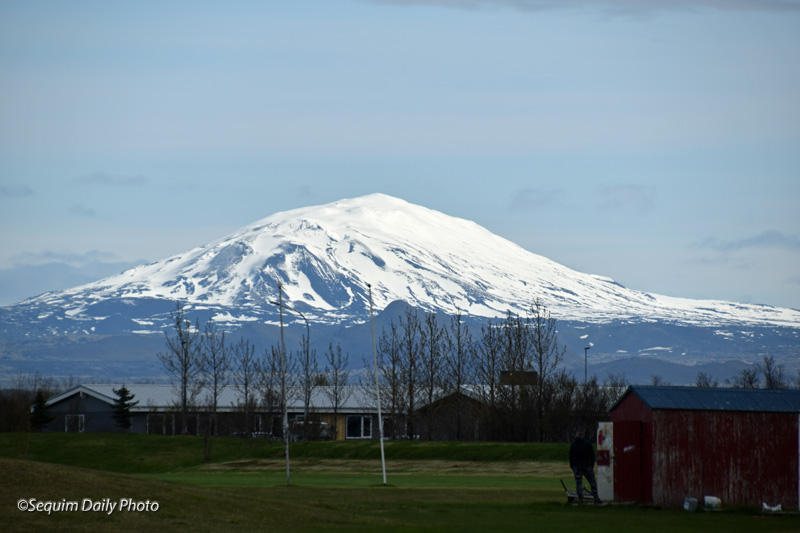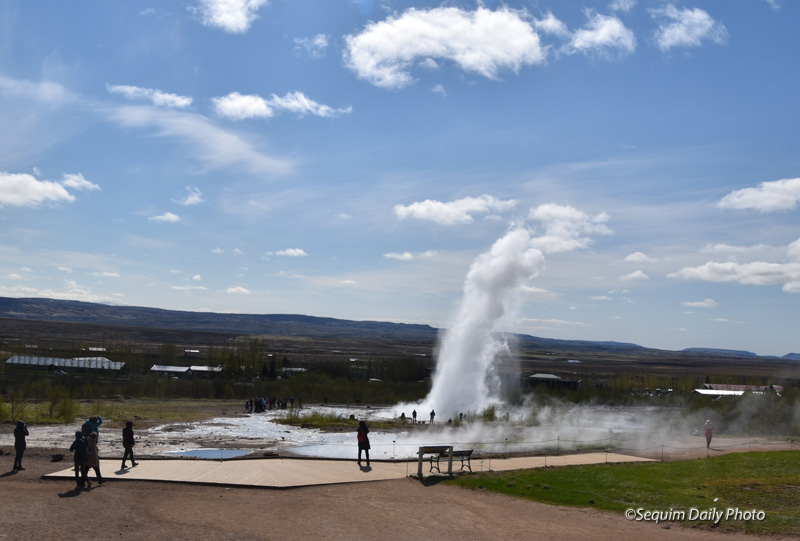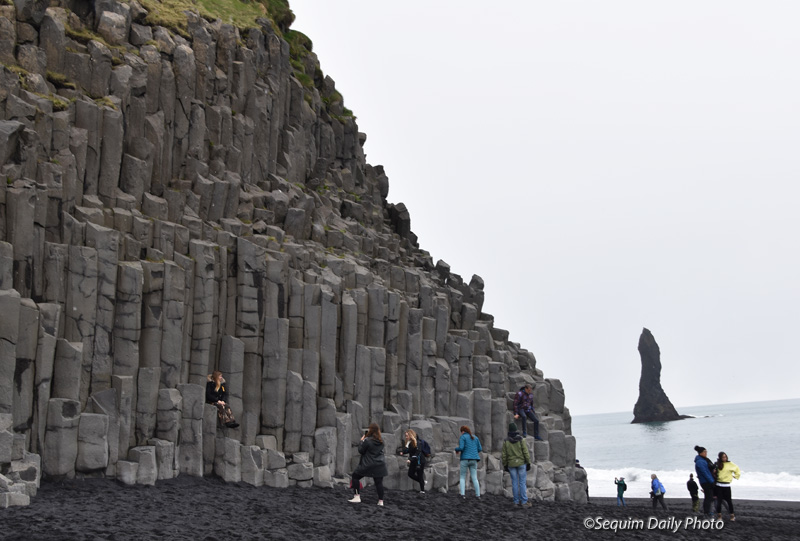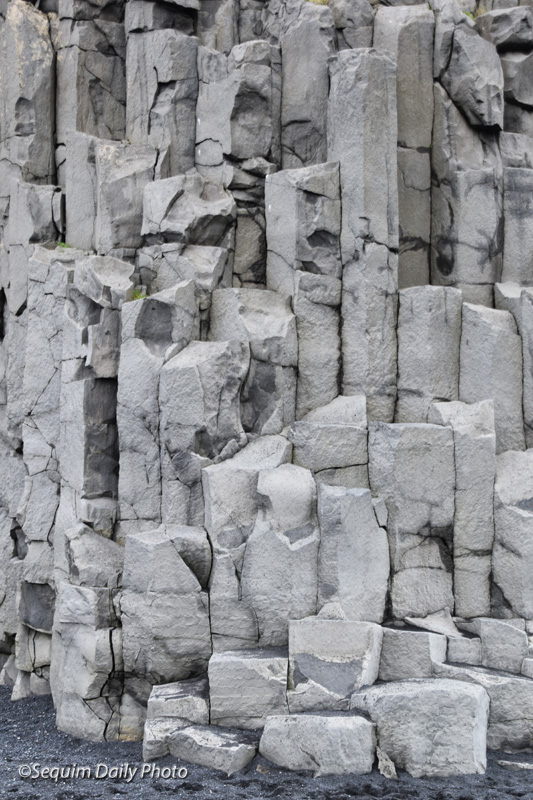
Iceland is home to 32 volcanic systems and around 130 volcanic mountains. Many are considered extinct but some, like Hekla, above, are not. Hekla was described to us as being like a woman who is 12 months pregnant and very, very grumpy.

Volcanic activity is not far beneath the earth’s crust in Iceland and areas of geysers and steam vents are indications. This is the Strokkur Geyser.
Because thermal energy is so close to the surface, Iceland has harnessed it for the benefit of more than half the population. Geothermal power provides hot water and energy to Reykjavik and excess hot water is used in the city to heat up streets and paths to make them safer during winter.

Iceland’s volcanic history is told in features like these basalt formations at Reynisfjara Beach, as is the sea stack offshore to the right. And the black sand beach.

These formations are likened to Giant’s Causeway in Ireland.
The land that we saw in some parts of Iceland was almost a moonscape, the result of regular volcanic eruptions and lava flows that have covered the land. Things grow slowly on the surface and the land is softly undulating and covered with thick moss. It is a very fragile landscape with little of the sort of soil most of us take for granted.
I’ll show you more interesting features tomorrow.
It seems like a fascinating country.
Very ingenious of the Icelanders to make use of energy that volcanoes give off.
Thermal energy is such a brilliant and positive way to make use of all that energy Kay. Iceland has a fascinating landscape ✨
The topography is amazing! Wonderful shots.
Wow! You got some fabulous pics, Kay!
Excellent photos, Kay.